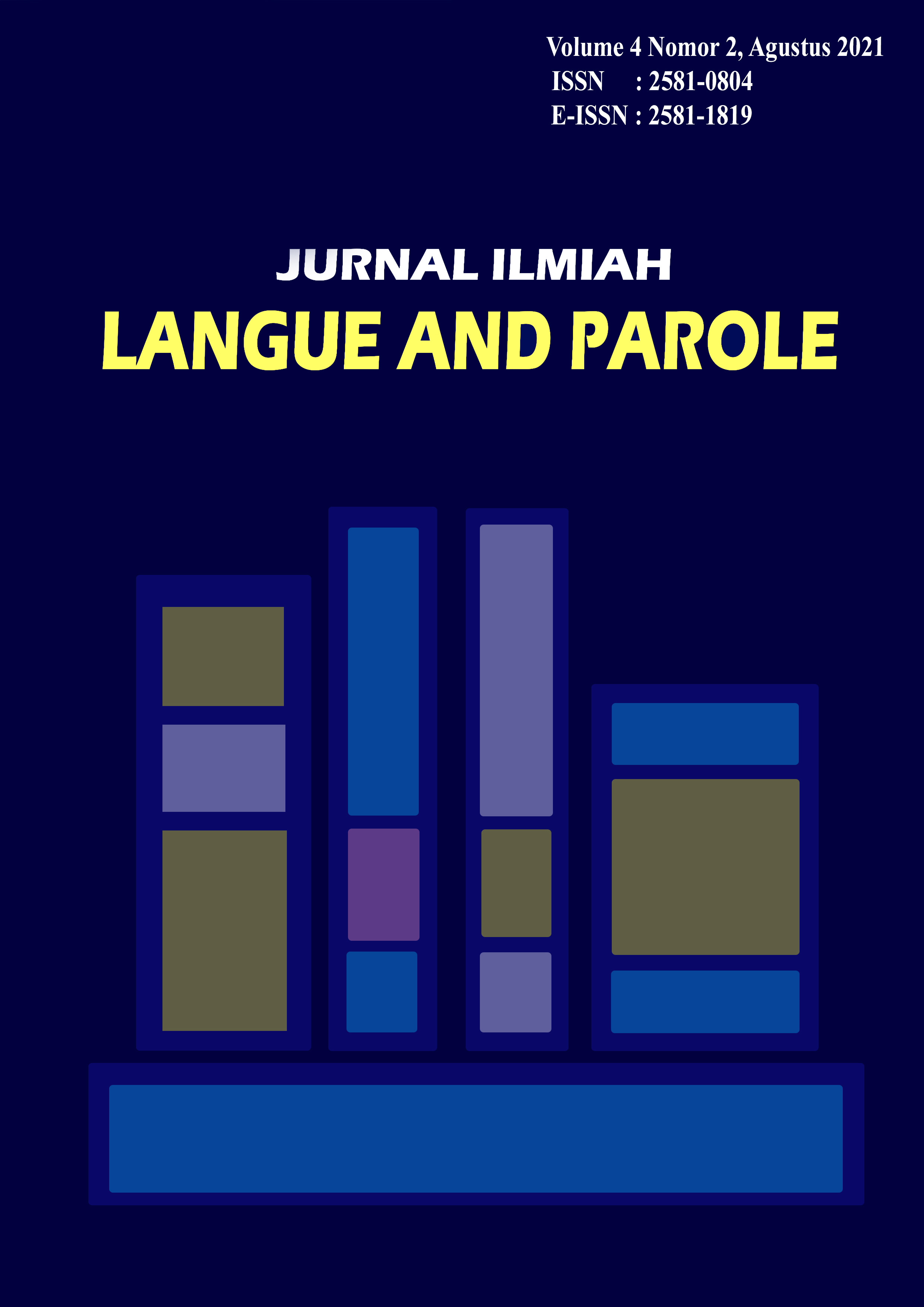A Motivator’s Act of Persuasion on Dynamic Characters in Les Miserables Novel’s Victor Hugo
DOI:
https://doi.org/10.36057/jilp.v4i2.483Keywords:
Motivator, Persuasion, Dynamic CharactersAbstract
The problem in this analysis is the motivator character from the story that he can change a lot of people around him. This motivator has brought the most of characters in the novel to become the better person. Not only have the people who love and respect him, but he also changed the people that hate him through his act of persuasion. In this study, the researcher applies the psychological analysis and genetic structuralism, it has a role to explain literary work as structure base on the elements that formed them, which are society and social life.
The motivator has changed his character because the kindness of Bishop Myriel, Fantine has changed her character because the evil of Thénardier couples. Meanwhile, the other three characters, Javert, Cosette, and Marius, all of them have changed because the actions of Motivator through the act of persuasion. There are a lot of way to persuade others, and Motivators’ act of persuasion proves to be successful on this novel.
Downloads
References
[2]Bloom, Harold, 1988, Victor Hugo: Modern Critical Views, Newyork: Chelsea House.
[3]Daiches, David. 1990. Critical Approaches to Literature, Singapore: Singapore Publisher Ltd.
[4]Hoffheimer, Michael H. 2012. Motivator’s Nightmare: Rehabilitation and Redemption in Les Misérables. Accessed from the website: https://www.mcgeorge.edu/documents/publications/01_Hoffheimer_FINAL.pdf
[5]Hugo, Victor. 1976. Les Misérables. Trans. Norman Denny. New York: Penguin.
[6]Kennedy, X.J. and Dana Gioia. 1995. Literature: An Introduction to Fiction, Poetry, and Drama. New York: HarperCollins.
[7]Maslow, A. H. 1943. A theory of human motivation. Psychological Review. 50(4). 370-396.
[8]McAteer, John. 2011. Javert is “Right”: The Demonization of Conservatism in Les Misérables. Accessed from the website: http://www.equip.org/ article/javert-is-right-the-demonization-of-conservatism-in-les-miserables/(the first of January 2019 at 11.00 a.m)
[9]Mullins, J. Laurie. 2007. Hospitality Management and Organizational Behavior. London: Longman.
[10]Petocz, Agnes. 1999. Freud, Psychoanalysis, and Symbolism. Cambridge: Cambridge University Press.
[11]Pradobo, Rachmat Djoko, et.al. 2001. Metodologi Penelitian Sastra. Yogyakarta: PT. Hanindita Graha Widia.
[12]Sari, Milya. 2020. Penelitian Kepustakaan (Library Research) dalam Penelitian. Jurnal of Natural Science 6 (1)
[13]Strachey, J. 1955. Complete Psychological Works of Sigmund Freud (Vol. 10). London: The Hogarth Press.
[14]Vargas, Llosa. 2004. The Temptation of the Impossible: Victor Hugo and Les Misérables. Princeton: Princeton UP. Print.
[15]Wellek Rene and Austin Warren. 1956. Theory of Literature. London: Lowe & Brydone








